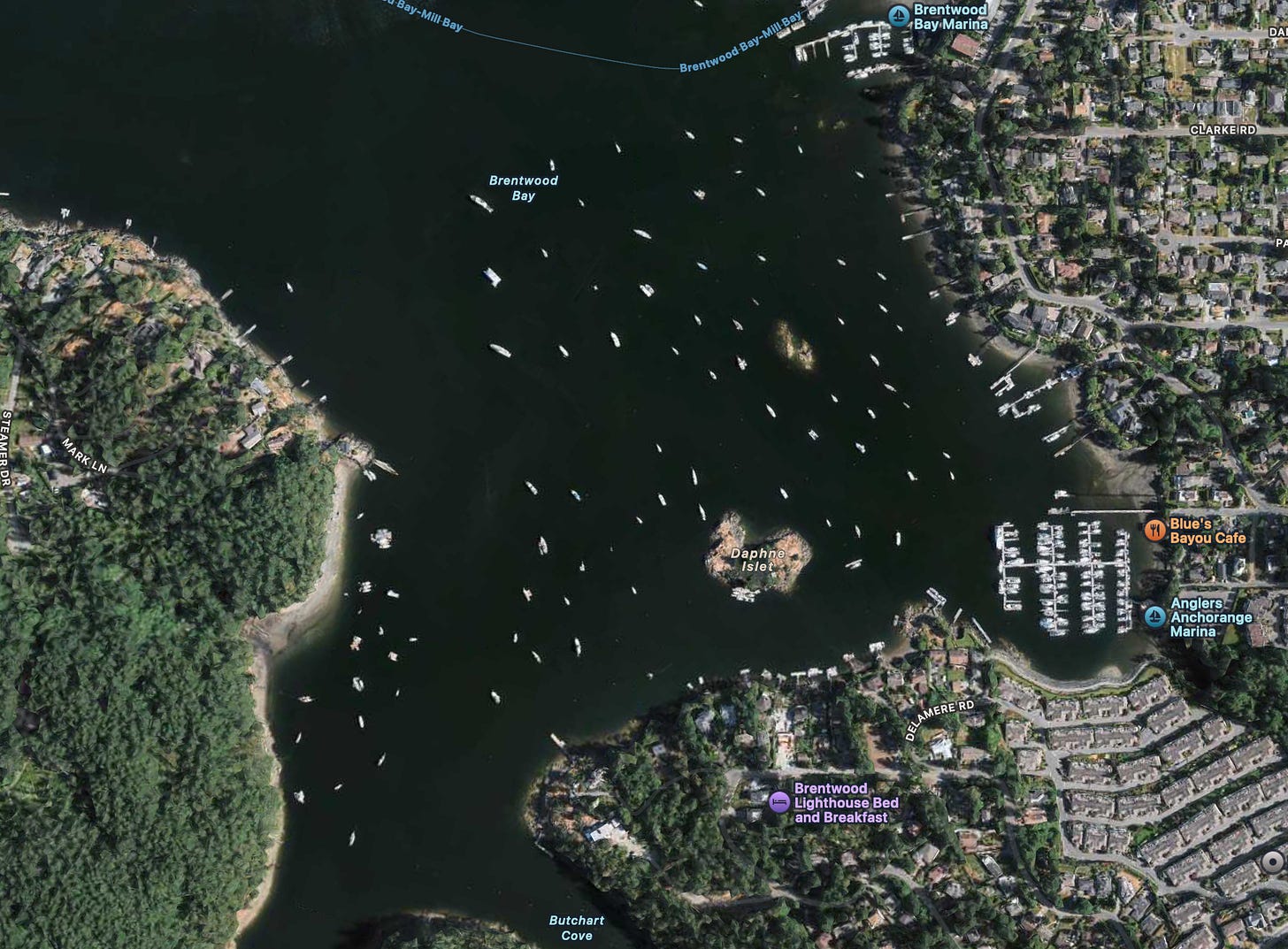Join me on Substack and Subscribe
The Saanich Inlet used to bubble with life. Eagles perched in giant firs towering above the shoreline watching the herring boil. The seabirds feasted from the surface while the winter springs fed from below. Ducks, gulls, and grilse were plentiful, and the sandy beaches spouted with telltales of healthy shellfish.
As a kid I witnessed the very end of that memory from the back of my dad’s fishing boat. Today, all of that is gone. I remember asking my dad what happened to the Saanich Inlet, and he said the government thought they could manage it from Ottawa better than we can manage it locally. That comment has stuck with me for years.
For decades, the federal and provincial governments have excluded the W̱SÁNEĆ because they fear our Aboriginal and Douglas treaty rights will diminish their power. I believe the opposite is true: by aligning our rights and interests, we can create better outcomes for everyone in our community.
In 2008, I was elected to Central Saanich Council. I was more-or-less immediately introduced to the dysfunctional administration of Canadian governance, that exploited ecosystems, plundered species, and whose bureaucratic malaise was a permit for pollution. Euphemistically, it is called progress.
I received several letters from residents complaining of the near total absence of statutory and regulatory enforcement in the marine environment that led to the proliferation of mooring buoys, abandoned vessels, and increasingly polluted beaches.
Within weeks of my election, I encountered the jurisdictional gridlock that allows problems in Brentwood Bay, Tsehum Harbour, Ganges Harbour, and many small bays and inlets up the British Columbia coastline, to grow and persist.

There are environmental issues. For example, municipal stormwater management built on a philosophy of hydrological efficiency (drain it into the closest bay), or a marina replacing critical eelgrass habitat, or another abandoned boat full of toxic junk sinks, a victim of the winter wind.
Now, there are growing social issues. For example, more people pushed out of the housing market join the liveaboard community. Government agencies are reluctant to address the emergent issue, because they also cannot deliver adequate governance that produces housing options people can afford on the land either.
Nearly 20 years later, I have been elected to both the local and provincial government and I am now W̱JOȽEȽP’s (Tsartlip First Nations) negotiator. I am exhausted with having the same discussion just from different seats at the table. At my first meeting with the federal and provincial government representatives, we again discussed the systemic problems in Brentwood Bay.
Over two full-day meetings we heard from the various agencies from the federal and provincial governments that are all involved in the management of the marine environment. Frankly, the sheer scale of our coastline, combined with a fragmented web of legal and jurisdictional responsibilities, has led to an inefficient and ineffective system.
The inability for our governing bodies to properly align those factors has produced the frustration felt by the public, in part eroding their confidence in our political system.
In 1852, the W̱SÁNEĆ people signed a treaty with James Douglas, the representative of the Crown. Known as the Douglas Treaties they protected W̱JOȽEȽP’s village sites, and guaranteed the right for our families to continue our hunting and fishing practices as formerly.
Join me on Substack and Subscribe
The treaty remains in force today, yet successive governments have failed to implement it in good faith. The federal and provincial governments have not protected the Treaty rights, they have taken up all the land, and the judicial branch has repeatedly found their actions over the past 173 years to be illegal.
Unfortunately, this reality creates a massive liability for all of us. It doesn’t need to be. In my new seat as W̱JOȽEȽP’s negotiator, I look to the Douglas Treaty with optimism, seeing the opportunity it offers.
It helps me see restored beaches, robust herring, salmon, and sea bird populations, a vision of ecosystem health that is inspired by our memories and informed by W̱SÁNEĆ stewardship values. Why can’t we have a well organized and multi-jurisdictional vessel management plan, with coordinated governance by a local joint management board that is both proactive and responsive?
By treating this as a zero-sum game, the federal and provincial governments have not only restricted First Nations’ rights and responsibilities but have also mismanaged marine resources to the brink of collapse.
Think of the benefits that can be produced from an inclusive and appreciative approach where we move from managing scarcity, to embracing an abundance mindset that strives to achieve the best of all possible outcomes for our community and the environment.
In my discussions with the federal and provincial governments I remind them of their responsibility to implement the Douglas Treaty rights. It is long past time for a joint management approach to Brentwood Bay.
I believe if we can figure out a cooperative approach in the Saanich Inlet, then perhaps we can create a model of local-empowerment, better coordination of human and fiscal resources, alignment of Crown agencies, and stronger enforcement of statutory and regulatory frameworks, that leads to a cleaner environment and a more just society
Join me on Substack and Subscribe

0 Comments